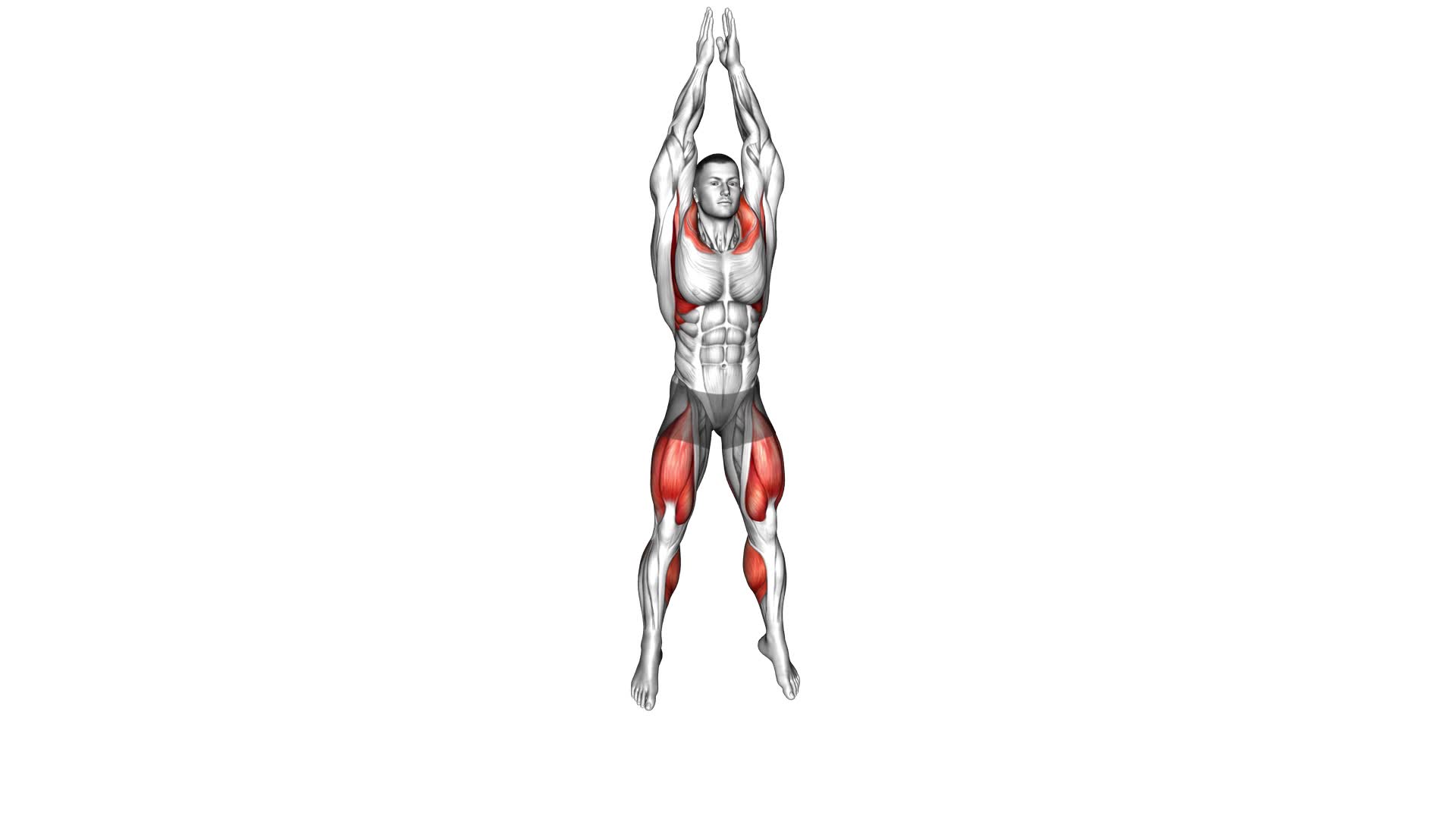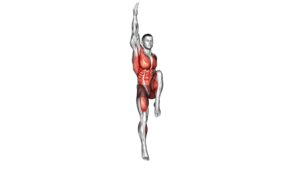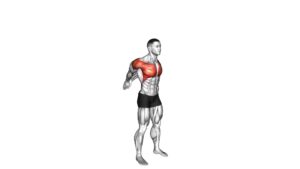Jumping Air Clap (male) – Video Exercise Guide & Tips

Are you looking for a dynamic exercise that targets multiple muscle groups? Look no further than the Jumping Air Clap!
Watch This Exercise Video
This explosive move engages your legs, core, and upper body, all while improving your cardiovascular endurance.
In this video exercise guide, you'll find step-by-step instructions and helpful tips to master the proper form and technique.
Whether you're a beginner or a seasoned athlete, this guide will provide modifications and progressions to challenge and enhance your workout.
Let's get started!
Key Takeaways
- Jumping Air Clap targets multiple muscle groups, engaging the legs, core, and upper body.
- It improves cardiovascular endurance and enhances upper body strength.
- Proper form and technique involve starting with feet shoulder-width apart, exploding upwards, and clapping hands together at the peak of the jump.
- Common mistakes to avoid include lack of coordination, incorrect hand position, landing with locked knees, and failing to synchronize movements properly.
Benefits of Jumping Air Clap
Jumping Air Clap can significantly improve your upper body strength and cardiovascular endurance. This exercise involves jumping explosively into the air and clapping your hands together before landing. It's a dynamic movement that engages multiple muscle groups in your upper body, including your chest, shoulders, and arms.
When you perform Jumping Air Clap, you aren't only working on your upper body strength but also your cardiovascular endurance. The explosive jumps and rapid arm movements require a significant amount of energy, which in turn increases your heart rate and challenges your cardiovascular system. This helps improve your overall endurance and stamina.
In terms of upper body strength training, Jumping Air Clap is highly effective. The explosive movement targets your chest and shoulder muscles, helping to develop strength and power in these areas. Additionally, the arm movements required for the clapping motion engage your biceps and triceps, further enhancing your upper body strength.
Incorporating Jumping Air Clap into your workout routine can be a great way to add variety and intensity to your training. It offers a challenging cardiovascular workout while also targeting and strengthening your upper body muscles. Remember to start with proper form and gradually increase the intensity as you become more comfortable with the exercise.
Proper Form and Technique
To perform the Jumping Air Clap exercise correctly, start by standing with your feet shoulder-width apart. This exercise is a powerful plyometric movement that targets your lower body and improves explosive strength.
To execute the exercise, begin by squatting down, then explode upwards with maximum force, extending your legs and arms out to the sides. As you reach the peak of the jump, clap your hands together in the air, then quickly return to the starting position. It's important to maintain proper form throughout the exercise to prevent injury and maximize results.
There are a few common misconceptions about the Jumping Air Clap exercise that should be addressed. One misconception is that you need to jump as high as possible to get the most out of the exercise. While height can be a goal, it's more important to focus on explosiveness and power.
Another misconception is that you should land with your knees locked. This can put unnecessary stress on your joints. Instead, focus on landing softly with a slight bend in your knees to absorb the impact.
For those looking to challenge themselves further, there are advanced variations of the Jumping Air Clap. One variation is to add a tuck jump at the peak of the jump, bringing your knees up towards your chest before clapping your hands. Another variation is to perform the exercise with ankle weights or holding dumbbells to increase resistance and intensity.
Remember to always consult with a fitness professional before attempting advanced variations or if you have any concerns about your form or technique.
Modifications and Progressions
To modify and progress the Jumping Air Clap exercise, you can incorporate various modification options and advanced variations.
One way to modify the exercise is by adding a tuck jump. This involves bringing your knees up towards your chest while in mid-air, before extending your legs back out and landing. The tuck jump adds an extra level of difficulty to the exercise and engages your core muscles even more.
Another way to increase the intensity of the Jumping Air Clap exercise is by adding resistance. You can do this by wearing ankle weights or holding dumbbells while performing the exercise. The added resistance challenges your muscles and helps to build strength and power.
When incorporating these modifications and progressions, it's important to maintain proper form and technique. Focus on landing softly and with control, keeping your knees slightly bent to absorb the impact. Also, remember to engage your core muscles throughout the exercise to provide stability and support.
Common Mistakes to Avoid
To avoid common mistakes while performing the Jumping Air Clap exercise, it's important that you focus on maintaining proper form and technique. Here are some tips for beginners to help you avoid these common mistakes:
- Lack of coordination: One of the most common mistakes beginners make isn't coordinating their movements properly. Make sure to synchronize your jump and clap, ensuring both actions happen simultaneously.
- Incorrect hand position: Another mistake to avoid is having your hands too close together or too far apart. Keep your hands at shoulder-width distance to ensure a proper clap.
- Landing with locked knees: Many beginners tend to land with locked knees, which can lead to injury. Remember to land softly, bending your knees to absorb the impact and maintain stability.
Sample Workout Routine
For a well-rounded workout, incorporate the Jumping Air Clap exercise into your routine. To maximize the benefits of this exercise, it's important to begin with effective warm-up exercises. Engaging in dynamic movements like jumping jacks or arm circles will help increase your heart rate, warm up your muscles, and prevent injuries.
When targeting upper body strength during your workout routine, the Jumping Air Clap is an excellent choice. This exercise primarily focuses on your shoulders, chest, and arms. As you jump, extend your arms out to the sides and clap your hands together in mid-air. This movement engages your chest muscles, strengthens your shoulders, and improves overall upper body power.
To create an effective sample workout routine, combine the Jumping Air Clap with other exercises that target different muscle groups. For example, you can pair it with squats or lunges to work your lower body, or add in push-ups for an extra challenge to your chest and triceps. Remember to incorporate rest periods between sets and gradually increase the intensity of your workout as your strength improves.
Frequently Asked Questions
How Long Should I Rest Between Sets When Performing the Jumping Air Clap Exercise?
When performing the jumping air clap exercise, it's important to consider the rest duration between sets. Resting for about 30 to 60 seconds between sets is recommended to allow your muscles to recover and prevent fatigue.
However, the rest duration can be modified for beginners who may need more time to recover. It's important to listen to your body and adjust the rest duration accordingly to ensure proper form and prevent injury.
Can I Perform the Jumping Air Clap Exercise if I Have a History of Knee Injuries?
If you have a history of knee injuries, it's important to be cautious when performing the jumping air clap exercise. Consider modifying the exercise to reduce impact on your knees.
Alternatively, you can try other exercises that are less stressful on your knees, such as step-ups, lunges, or squat jumps.
It's crucial to prioritize your safety and listen to your body to avoid further injury. Consult with a fitness professional for personalized guidance.
Are There Any Specific Warm-Up Exercises I Should Do Before Attempting the Jumping Air Clap?
Before attempting the jumping air clap, it's important to warm up properly to prevent injuries. Start with dynamic stretches like leg swings and arm circles to loosen up your muscles.
Incorporate some light cardio exercises like jumping jacks or jogging in place to get your heart rate up. This will help increase blood flow and prepare your body for the intensity of the exercise.
Is It Better to Perform the Jumping Air Clap Exercise on a Hard Surface or a Padded Surface?
When it comes to the jumping air clap exercise, you might be wondering whether it's better to perform it on a hard surface or a padded surface.
Well, let me tell you, using a padded surface has its benefits. It provides more cushioning for your joints, reducing the impact on your body. This can help prevent injuries and make the exercise more comfortable.
Can I Incorporate the Jumping Air Clap Exercise Into a High-Intensity Interval Training (Hiit) Workout?
Yes, you can definitely incorporate the jumping air clap exercise into a high-intensity interval training (HIIT) workout. It's a great way to add intensity and challenge to your routine.
To modify the exercise, you can increase the speed or height of your jumps, or add weights for an extra challenge.
Adding the jumping air clap to your HIIT workouts can help improve your cardiovascular fitness, strength, and explosiveness.
It's a dynamic and effective exercise to include in your routine.
Conclusion
In conclusion, the jumping air clap exercise is a great way to improve upper body strength and explosiveness. By following proper form and technique, you can maximize the benefits of this exercise.
It's important to avoid common mistakes and gradually progress to more challenging variations. Incorporating the jumping air clap into your workout routine can be an effective way to enhance your overall fitness level.

Author
Years ago, the spark of my life’s passion ignited in my mind the moment I stepped into the local gym for the first time. The inaugural bead of perspiration, the initial endeavor, the very first surge of endorphins, and a sense of pride that washed over me post-workout marked the beginning of my deep-seated interest in strength sports, fitness, and sports nutrition. This very curiosity blossomed rapidly into a profound fascination, propelling me to earn a Master’s degree in Physical Education from the Academy of Physical Education in Krakow, followed by a Sports Manager diploma from the Jagiellonian University. My journey of growth led me to gain more specialized qualifications, such as being a certified personal trainer with a focus on sports dietetics, a lifeguard, and an instructor for wellness and corrective gymnastics. Theoretical knowledge paired seamlessly with practical experience, reinforcing my belief that the transformation of individuals under my guidance was also a reflection of my personal growth. This belief holds true even today. Each day, I strive to push the boundaries and explore new realms. These realms gently elevate me to greater heights. The unique combination of passion for my field and the continuous quest for growth fuels my drive to break new ground.







